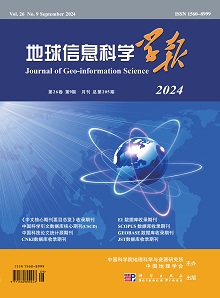Indirect Measurement of Forest LAI to Deal with the Underestimation Problem Based on Beer-Lambert Law
引用次数: 3
Abstract
Leaf area index(LAI) defined as one half of the total green leaf area per unit ground surface area.It is an important parameter of canopy structure,because it relates to many biophysical and physiological processes of canopy,including photosynthesis,respiration,transpiration,carbon cycling,net primary productivity,precipitation interception,and energy exchange,etc.Accurate measurement of forest leaf area index by means of remote sensing has been an important task in remote sensing research.The direct method of LAI measurement is time-consuming,labor-intensive and may destroy plants.Compared to the direct method,indirect methods by means of optical methods are quicker and more efficient.These methods are all based on the Beer-Lambert law.As an important means to validate remote sensing LAI products,indirect LAI ground measurement is the basis and standard of remote sensing inversion.However,indirect ground measurement method based on Beer-Lambert law has serious underestimation problem in forest.The derivation of Beer's law was originally in uniform gas medium,when applied to discrete vegetation measurement on a pixel scale.Its applicability has not got enough attention and validation.In this paper,by theory analysis,we find that the underestimation of leaf area index comes from the spatial heterogeneity of foliage area volume density,extinction depth and leaf angle projection function G if Beer-Lambert law is applied to LAI measurements in forest.Quantitative assessment of impact on LAI measurement from non-random distribution of canopy was made.It was shown that non-random distribution of canopy may bring 20-40% measurement error of LAI.An important conclusion is that the simple correction of Beer-Lambert law has significant limitations on the in situ forest LAI measurement.This method is not a fundamental solution to this underestimation problem,and the theories and methods for LAI indirect measurement need to be changed.基于Beer-Lambert定律的森林LAI间接测量处理低估问题
叶面积指数(Leaf area index, LAI)定义为单位地表面积总绿叶面积的一半。它是冠层结构的重要参数,涉及到冠层的光合作用、呼吸作用、蒸腾作用、碳循环、净初级生产力、降水截流和能量交换等多种生物物理和生理过程。利用遥感手段精确测量森林叶面积指数一直是遥感研究的重要课题。直接测量LAI的方法耗时长,劳动强度大,可能会破坏植物。与直接法相比,利用光学方法的间接法更快、更有效。这些方法都是基于比尔-朗伯定律。LAI地面间接测量作为验证遥感LAI产品的重要手段,是遥感反演的基础和标准。然而,基于比尔-朗伯定律的间接地面测量方法在森林中存在严重的低估问题。比尔定律的推导最初是在均匀气体介质中,应用于像素尺度上的离散植被测量。其适用性没有得到足够的重视和验证。本文通过理论分析发现,如果将Beer-Lambert定律应用于森林LAI测量,叶面积指数的低估来自于叶面积体积密度、消光深度和叶角投影函数G的空间异质性。定量评价了冠层非随机分布对LAI测量的影响。结果表明,冠层的非随机分布会导致LAI的测量误差达到20 ~ 40%。一个重要的结论是,对Beer-Lambert定律的简单修正对原位森林LAI测量有明显的局限性。这种方法并不能从根本上解决这一低估问题,LAI间接测量的理论和方法需要改变。
本文章由计算机程序翻译,如有差异,请以英文原文为准。
求助全文
约1分钟内获得全文
求助全文
来源期刊
CiteScore
2.70
自引率
0.00%
发文量
3757
期刊介绍:
Journal of Geo-Information Science is an academic journal under the supervision of Chinese Academy of Sciences, jointly sponsored by Institute of Geographic Sciences and Resources, Chinese Academy of Sciences and Chinese Geographical Society, and also co-sponsored by State Key Laboratory of Resource and Environmental Information System, Key Laboratory of Virtual Geographic Environment of Ministry of Education and Key Laboratory of 3D Information Acquisition and Application of Ministry of Education. Founded in 1996, it is openly circulated in the form of a monthly magazine.
Journal of Geoinformation Science focuses on publishing academic papers with geographic system information flow as the main research object, covering research topics such as geographic information cognitive theory, geospatial big data mining, geospatial intelligent analysis, etc., and pays special attention to the innovative results of theoretical methods in geoinformation science. The journal is aimed at scientific researchers, engineers and decision makers in the fields of cartography and GIS, remote sensing science, surveying and mapping science and technology. It is a core journal of China Science Citation Database (CSCD), a core journal of Chinese science and technology, a national Chinese core journal in domestic and international databases, and it is included in international databases, such as EI Compendex, Geobase, and Scopus.

 求助内容:
求助内容: 应助结果提醒方式:
应助结果提醒方式:


